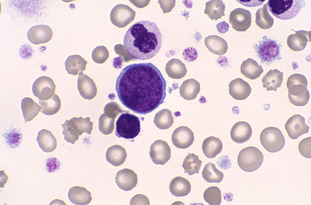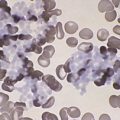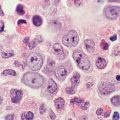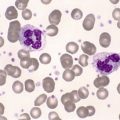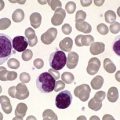B3. Platelets
Megakaryocytic maturation
Megakaryocytic maturation occurs within the bone marrow by a process known as endomitosis. The nucleus replicates in multiples of two without cytoplasmic division, only enlargement of volume. The cytoplasm becomes less basophilic as the megakaryocyte matures, acquiring azurophilic granules. Finally, platelets are produced by fragmentation of the megakaryocyte cytoplasm. Each megakaryocyte produces some 4000 platelets, which are approximately 1 to 2 μm in diameter.
Megakaryocytic maturation is divided into three stages: the megakaryoblast, promegakaryocyte and megakaryocyte.
Megakaryoblast
The megakaryoblast is a large cell about 20 to 30 μm in diameter. It has a single oval or kidney-shaped nucleus, several nucleoli and basophilic non-granular cytoplasm. Refer to Fig B3-1.
Promegakaryocyte
The promegakaryocyte is larger than the megakaryoblast and has 2 to 4 nuclei with several nucleoli. The cytoplasm is basophilic and contains fine azurophilic granules. Refer to Fig B3-2.
